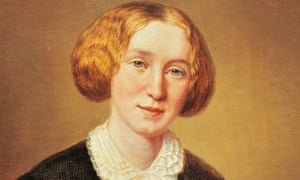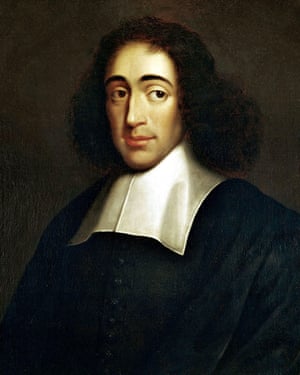George Eliot translation of Spinoza sheds new light on her fiction

Having languished in obscurity for more than a century, a new edition of George Eliot’s translation of Spinoza’s Ethics will be published next year, shedding new light on the creator of Middlemarch.
The author, born Mary Ann Evans, completed her translation of this central text of western philosophy in 1856, before she had taken on her pen name and while she was living in Berlin with George Lewes. If a publisher had taken it up, it would have been the first translation of the Ethics into English. But Lewes fell out with publisher Henry Bohn over £25, and the work fell by the wayside while Evans moved on to fiction and her nom de plume with the publication of Scenes from Clerical Life in 1857 and Adam Bede in 1859.
The translation lay forgotten for decades until a few hundred copies were printed for an academic audience in 1980 by the University of Salzburg. Marking what would have been the 200th anniversary of Eliot’s birth on Friday, publisher Princeton University Press has announced it will release a new edition in February.
When Clare Carlisle, a reader in philosophy and theology at King’s College London, discovered its existence, she said “it just felt like it should be out there”.
“The reason it didn’t get published was an accident really,” Carlisle said. “Lewes expected to get £75 for it and when he wrote to the publisher he said, ‘We only said £50.’ It was quite petty, given she’d done all this work … Lewes said forget it and that was it. A few years later Lewes did attempt to get it published but not very vigorously and then that didn’t happen either. Then it just got left.”
Eliot had already established herself as a formidable intellectual, becoming the unofficial editor of the progressive Westminster Review as well as publishing a translation of the German philosopher David Strauss’s Life of Jesus in 1846 and Ludwig Feuerbach’s Essence of Christianity in 1854.
According to Carlisle, the Spinoza translation sheds light on “a really important phase of [Eliot’s] intellectual and philosophical formation”.
“She was basically immersed in this project for a couple of years just before she began writing fiction,” she said. “It was the last thing she did before she wrote her stories and became George Eliot. A large part of Spinoza’s Ethics gives this insightful analysis of human emotion, and I think that’s something she obviously learned from, because she has this really amazing understanding of human emotions and how they work.”
Carlisle also suggested a link between Spinoza’s philosophical treatment of human freedom and Eliot’s exploration of the issue as a novelist.
“Spinoza was a determinist so he didn’t think human beings have free will,” she explained. “George Eliot isn’t exactly a determinist, but she has a really interesting take on the question of human freedom. Rather than saying, ‘We are free and we have free will,’ Spinoza is trying to say ‘How can we become free? It isn’t something we automatically have. It’s something we have to work for.’ And I think you get the same sense in Eliot’s novels, that her heroines often have to find ways to become freer, to liberate themselves from their old habits or from the narrow-minded mindset they’ve been brought up in.”
It is a theme that speaks to Eliot’s own situation. The author never married the journalist Lewes, but the two of them were living openly together while she was working on the translation, in defiance of contemporary norms.“She’d taken this very daring step and then spent the time translating a really daring work that challenged conventional religious ideas,” said Carlisle. “There’s something very fitting about the fact that’s what she was doing at that moment in her life, almost like a moment of transition from her old life to her new life as George Eliot.”
Although it’s more than 150 years old, Carlisle added, Eliot’s version compares very well with modern translations: “In the 19th century, translation was more of an art than a science. So as you’d expect of George Eliot it has a nice literary quality about it. Some of the decisions she made compare very well against some of the decisions modern translators make.”






.jpeg)
Comments
Post a Comment